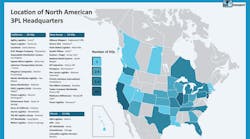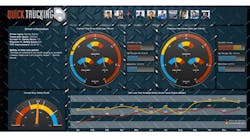Anybody going into a relationship with a 3PL thinking they’ll be able to offload a lot of their responsibilities has already cursed themselves. I came to that realization while interviewing sources for a feature on 3PLs to appear in MH&L’s May issue. One of my interviews was with Shanton Wilcox, supply chain management principal with Capgemini Consulting. We were discussing the 17th annual 3rd party logistics study on which they partnered with Penn State, Panalpina, and EyeForTransport. During our conversation we talked about the challenges of managing global supply chains, and this is where, if you don’t attend to every little detail of a 3PL relationship, you may end up wondering if just doing things yourself would have been easier.
Take the Trans Pacific Trade Agreement the U.S. is trying to push with 11 Asian countries. By shipping volume this will be the largest trade agreement in the world, dwarfing NAFTA, Wilcox said. To take full advantage of these agreements as a shipper, you must determine which responsibilities you’ll take on and what you’ll need your 3PL’s support with. You may want them to help make sure your company is in compliance with various aspects. But just watching them watching you is a full-time job.
“Just to structure an agreement and then making sure it’s followed on a day to day basis is not a sometimes thing,” Wilcox said. “You have to look at that 3PL as an extension of your company because you’re accountable.”
He cited The Foreign Corrupt Practices Act as an example of where you could be unpleasantly surprised. Some huge companies were hit with fines for paying bribes. In the countries they were doing business with, bribes may be considered “tariffs.”
“Most 3PLs that have local operations in those countries just view that as a cost of doing business, when, from the outside looking in, a lot of organizations view that as a bribe,” Wilcox added. “But if you’re in country and you don’t pay that ‘fee,’ your shipment doesn’t move. Well 3PLs are paying that fee on behalf of shippers, and any part of that transaction that touches a U.S. entity, whether a 3PL or a bank that pays the transaction, or a U.S. shipper, that gives the Department of Justice jurisdiction. If they investigate and determine that was a bribe, there are huge penalties.”
So, in screening and monitoring 3PLs, you’ll have to make sure they truly understand your corporate policies and whether your company is prepared to take that risk. Cloud-based software has put many 3PLs, large and small, on a level playing field where “Big Data” is concerned. But there’s a big difference between data management and information management—and knowing that difference is what separates success from failure in any supply chain.
That’s the philosophy Colman Roche espoused when he joined Pivot88 as its executive vice president recently. This is a provider of a cloud-based supply chain service that promises visibility, validation and verification into the early stages of supply chain processes, including manufacturing. He told me technology is extending better visibility to more entities in supply chains, and visibility means control. That perception of control is inspiring some companies to pull business back from their 3PLs, he believes.
“I think if shippers felt they had control over all these steps in their supply chain they’d prefer to do it themselves,” Roche said. “It’s similar to the reshoring thought process. We’ve gone offshore because of the perception we could save money. A number of shippers work with 3PLs because the perception is they could save money. If companies have better visibility I think that could factor into their decision process.”
Roche’s company is actually a spinoff of a company that helps people in the outsourcing business—helping companies in North America set up relationships with suppliers or contract manufacturers in China. But the next question became “how do I control them?” Do I have to wait until a container’s on the water before I know whether it’s on time?
His new company is dedicated to the idea of giving supply chain visibility into the timing of events at each stage of production without having to install an ERP. This is a collaborative app, not only for communication between the shipper and the supplier, but with sub suppliers as well, so the user can make sure all stages of an event chain happen on schedule.
Before signing off on this post, I don’t want to leave you with the idea that 3PLs are going away—or that they should. Our point is that the 3PL relationship requires work that can’t be outsourced. Whether you invest in that work or the work required to make a piece of technology help you manage logistics yourself, be ready to be a full-timer.



